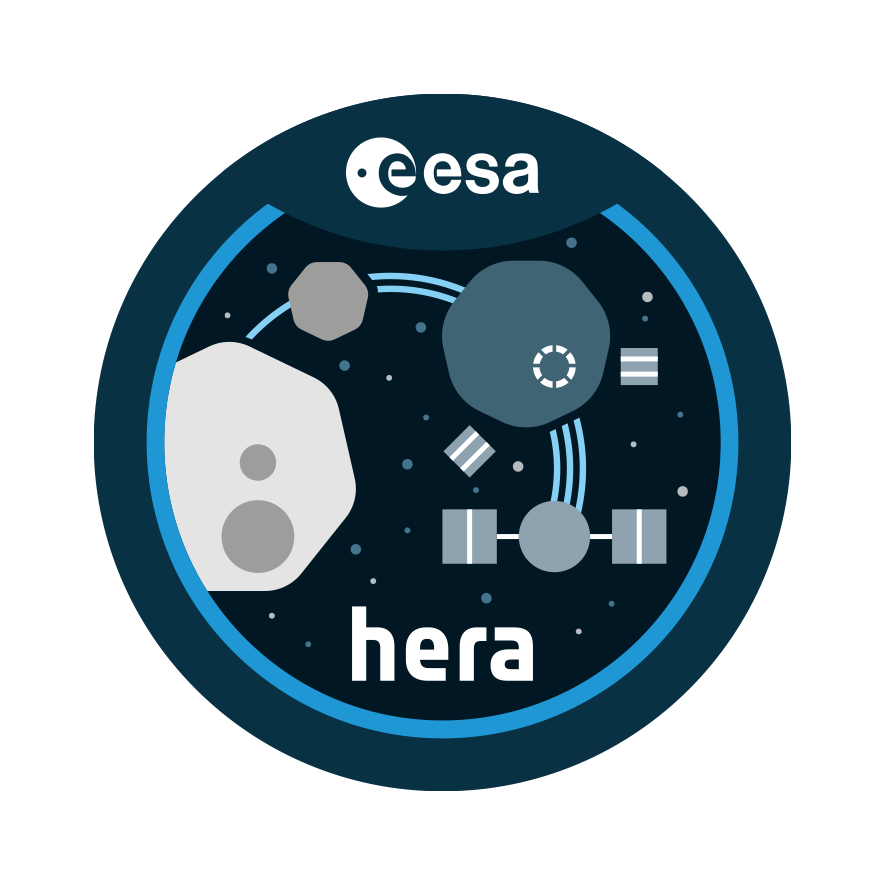Milani Cubesat
Milani is a CubeSat developed by Tyvak International srl, devoted to the visual inspection and dust detection of Didymos asteroid following DART impact.
Main scientific objectives:
• Map the global composition of the Didymos asteroids
• Characterize the surface of the Didymos asteroids
• Evaluate DART impact effects on Didymos asteroids and support gravity field determination
• Characterize dust clouds around the Didymos asteroids
Parameters
| Volume | 6U XL CubeSat |
| Dimension | 13 x 24.6 x 36.6 cm |
| Propulsion | Cold-gas propulsion system |
| Communication | S-band inter-satellite link |
| Operative Orbit Range | 11 km to 3 km from Target Asteroid |
| Primary Payload | ASPECT |
| Secondary Payload | VISTA |
| Mass | 12 kg wet |
VISTA
(Volatile In-Situ Thermogravimetre Analyser)
Vista is a micro-thermogravimetre (sensor head including Proximity Electronics) devoted to detecting the presence of dust particles smaller than 5-10 μm; to detect volatiles (e.g., water) and light organics characterisation (e.g. carboxylic acids with low carbon chain) and monitoring the molecular contamination in support of other instruments on-board cubesat or satellites. VISTA has been designed with a miniaturised configuration (as an environmental sensor) for cubesat and other instrument packages.
The device is based on micro-oscillators with a detection system made up of piezoelectric crystals with a metal electrode that acts as a collector of micron and sub-micron size particles. An important challenge of VISTA is the presence of a built-in heater and a built-in Resistance Temperature Detector (RTD) integrated onto the crystal. This special design dramatically reduces the instrument mass and the power required to perform thermal cycles to characterise the deposited mass on the sensor head.
Parameters
|
Sensor Type |
Quartz Crystal Microbalance (QCM)
|
|
Resonance frequency |
10 MHz |
|
Volume |
50mm × 50mm × 38mm |
|
Sensitive area |
1.5cm^2 |
|
Particles size detection range |
5-10 μm to sub-μm particles |
|
Methods/Technique used |
1. Dust and contaminants accumulation (passive mode) 2. TGA cycles (active mode) |
|
Mass |
90g |
ASPECT
ASPECT is a miniaturised hyperspectral imager extending from the visible up to shortwave infrared (SWIR) wavelengths. In contrast to more traditional spatial scanning imaging spectrometres, the Asteroid Spectral Imager takes 2D snapshots at a given wavelength. When multiple snapshots are combined, a spectral datacube is formed, where the wavelength bands are separated in the time domain.
The instrument is split into four measurement channels, one in the visible (VIS), and two in the NIR and one in SWIR. The VIS and NIR channels are imaging spectrometres, while the SWIR channel only measures a single point. The spectral separation is done by a tunable Fabry-Perot Interferometre (FPI). All four channels have dedicated FPIs optimised for the desired wavelength range. The imaged wavelengths are freely selectable within these ranges, and the targeted spectral resolution is ca. 10 - 50 nm. All four channels can be operated simultaneously and are independent of each other: even if a single image sensor or FPI is lost, the mission can still carry on with limited capabilities.
ASPECT: (LxWxH) 128mm x 96mm x 100mm; Mass: 1250g
Imaging PArameters
| Channel | VIS | NIR1 | NIR2 | SWIR |
|---|---|---|---|---|
| Field of View [deg] | 10° x 10° | 6.7° x 5.4° | 6.7° x 5.4° | 5° circular |
| Spectral range [nm] | 500 – 900 | 850 – 1275 | 1225 - 1650 | 1600 - 2500 |
| Image size [pixels] | 1024 x 1024 | 640 x 512 | 640 x 512 | 1 pixel |
| Pixel size [µm] | 5.5 µm x 5.5 µm | 15 µm x 15 µm | 15 µm x 15 µm | 1 mm |
| No. spectral bands | Ca. 14 | Ca. 14 | Ca. 14 | Ca. 30 |
| Spectral resolution [nm] | < 20 nm | < 40 nm | < 40 nm | < 40 nm |
Inter-Satellite Link (Radio Science)
An Inter-Satellite Link (ISL) will be used for Radio Science, allowing the measurement of Didymos gravity field that cannot be done by Hera alone. ISL doppler allows estimating of gravity coefficients to degree 2 and 3. Hera-Milani ISL doppler enables to estimate the extended gravity field of both binary components.
Accelerometers & Gyros
Milani will eventually land on Dimorphos and its accelerometers will allow the measurement of the bouncing properties at landing, which will give precious information on the surface mechanical response of the asteroid in its extremely low gravity environment.
Visible camera & star trackers
A visible camera and star trackers give attitude of Milani over a period of Dimorphos orbit (11.9 hr) around Didymos that will indicate dynamic variations.





